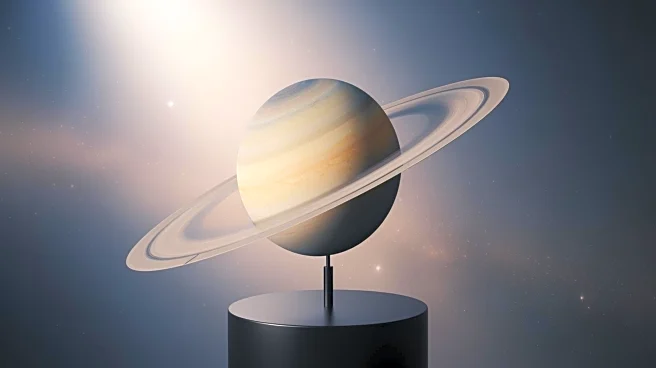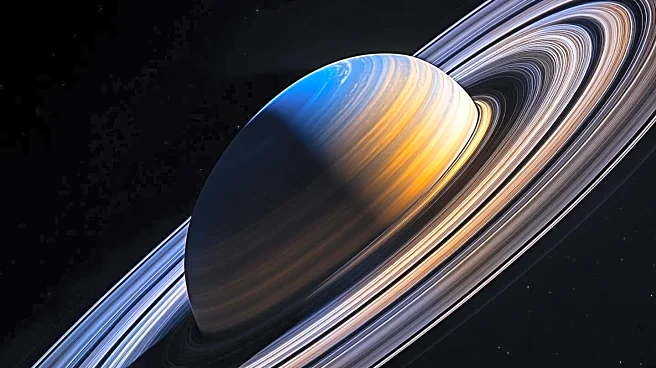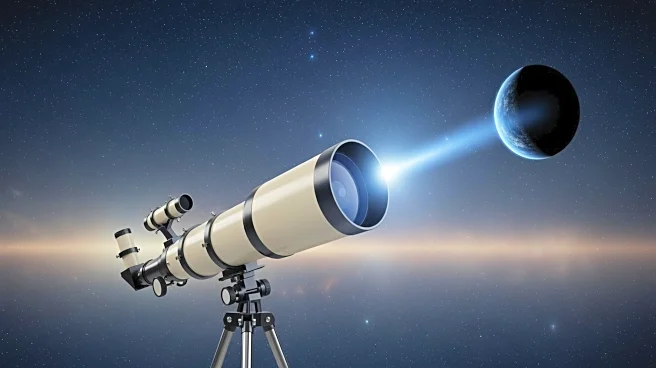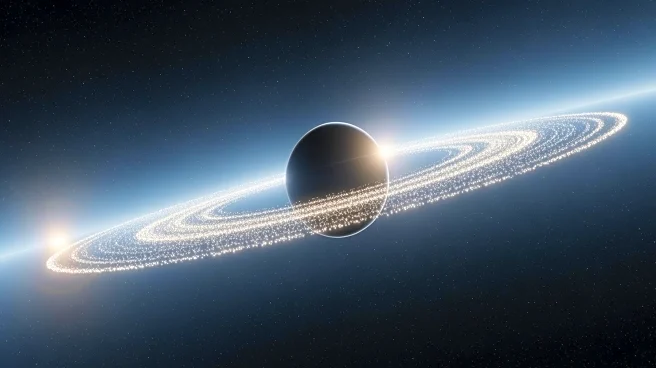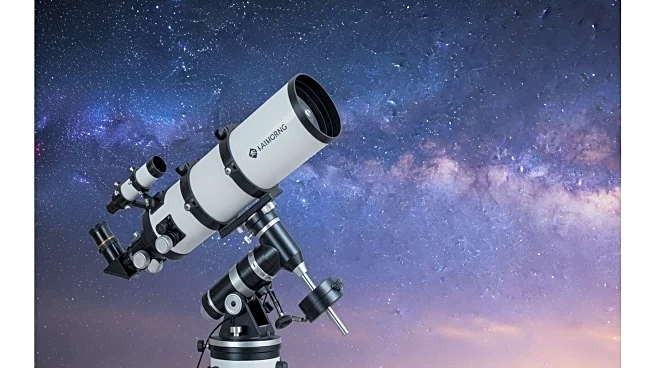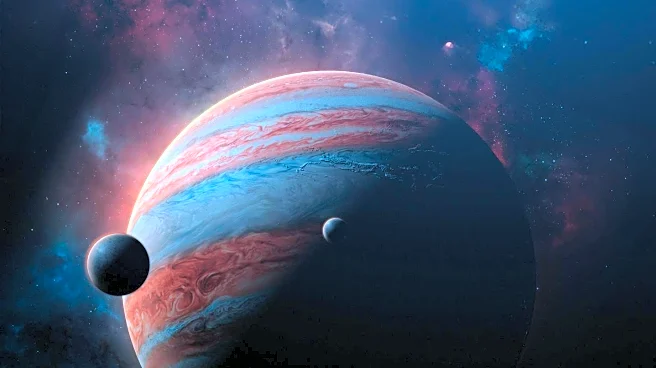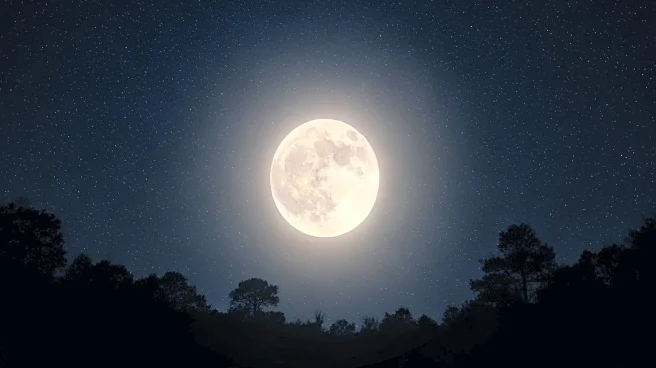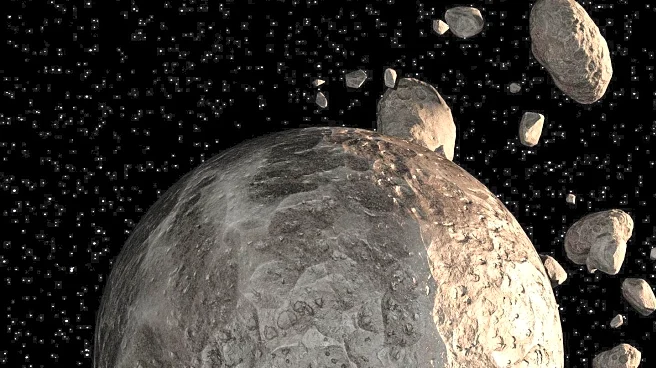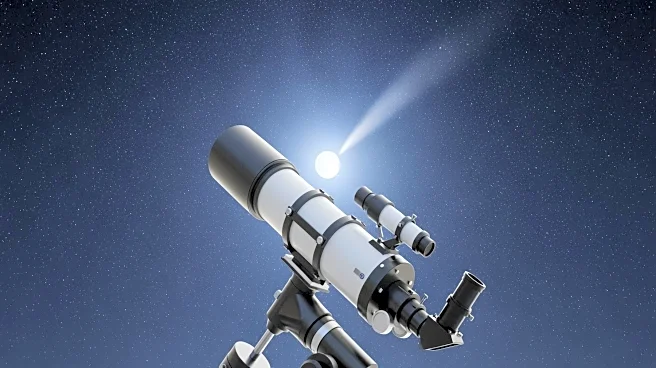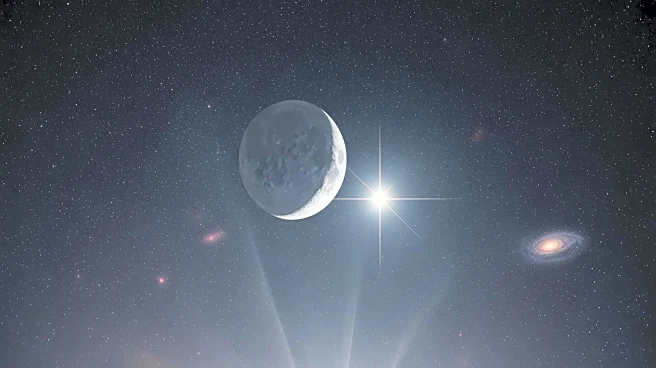What's Happening?
Saturn's moon Iapetus reaches inferior conjunction, positioned 1.3 arcminutes north of Saturn and shining at approximately 11th magnitude. This alignment makes Iapetus easier to observe near its parent
planet. Saturn, with a magnitude of 0.7, will be highest around 10 P.M. local daylight time, presenting a 43-inch wide ring system and a 19-inch disk when viewed through a telescope. Other moons such as Titan, Dione, Tethys, and Rhea will also be visible, with their positions changing throughout the night. The event provides a unique opportunity for astronomers and enthusiasts to observe Saturn's moons in detail.
Why It's Important?
The inferior conjunction of Iapetus offers astronomers and sky watchers a rare chance to observe one of Saturn's more elusive moons. This event is significant for both amateur and professional astronomers, as it allows for detailed observation and study of Saturn's moon system. Observing such celestial events can enhance understanding of planetary dynamics and moon interactions. Additionally, it fosters public interest in astronomy, encouraging educational outreach and engagement with the sciences. The visibility of multiple moons during this conjunction can also aid in comparative studies of their physical characteristics and orbital behaviors.
